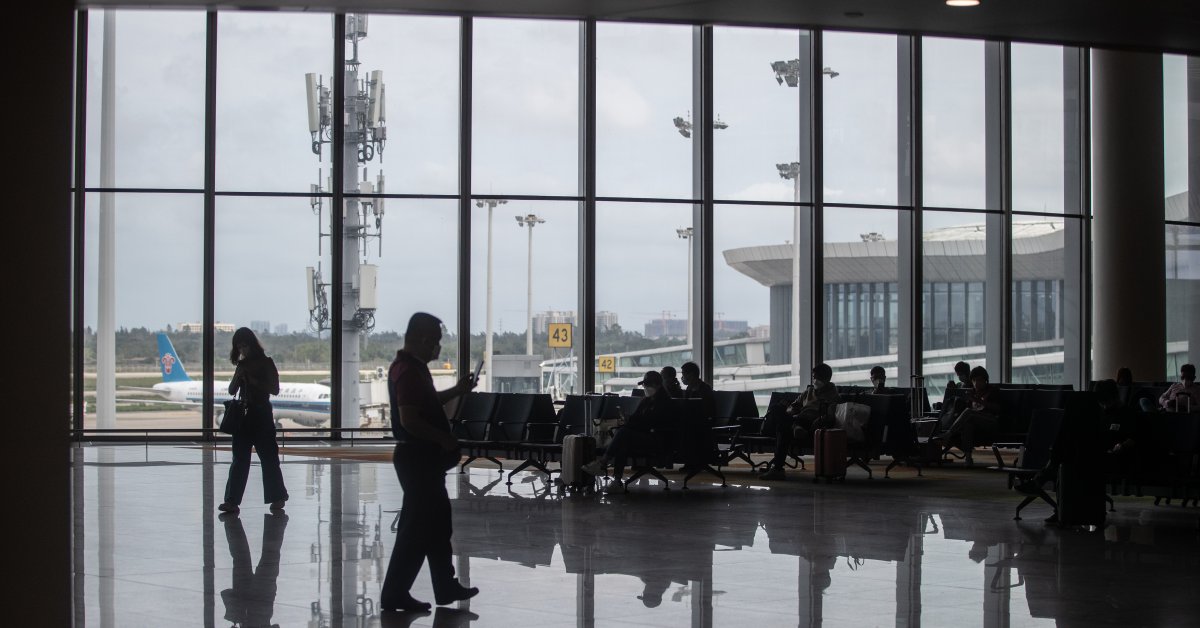
Nestled among the crumbling stupas of Laos’s historic cash Luang Prabang, 525 Cocktails and Tapas was the city’s premier high-quality eating establishment, serving elevated community cuisine and perhaps Southeast Asia’s yummiest smoked negroni.
International website visitors comprised 95{d8a8d447f05f03c64398acf0d3c5a745c9c41fc784ba89cd5aecd37177dc7d51} of the restaurant’s footfall, and with tourist numbers to Laos breaking documents 12 months-on-calendar year, furthermore a new higher-velocity prepare route thanks to url the landlocked country with China’s city of Kunming to the north and Singapore to the south, enterprise was hunting up.
Then the pandemic struck. With borders sealed shut, 525’s British proprietor Andrew Sykes experienced no preference but to suspend functions, rather pivoting to community clientele by opening new premises in Laos’s modern-day money, Vientiane. “The enterprise is going very well,” states Sykes. “I will reopen in Luang Prabang but just not fairly yet.”
Laos flung open its borders to visitors in Might but the uptick in foreign arrivals has been torpid. Lots of in the hospitality business hoped that would adjust adhering to the opening of China’s borders on Jan. 8, given cost-free-expending Chinese tourists comprised pretty much a quarter of the nation’s 4.7 million global guests in 2019. However, the effects have been underwhelming.
“We’re starting to see Chinese buyers come in, but it is sub-10{d8a8d447f05f03c64398acf0d3c5a745c9c41fc784ba89cd5aecd37177dc7d51} of our business,” suggests Sykes. “It’s however predominantly Laos with some expats as nicely.”
In spite of an indeterminate human toll, the unexpected finish of China’s zero-COVID policy is an undoubted boon for the world-wide economic system, liberating people and suppliers of three decades of source chain disruptions wrought by arbitrarily shuttered ports and factories. The conclude of China’s pandemic travel constraints is also a massive relief to the world-wide hospitality field. In 2019, Chinese tourists made 155 million visits overseas, expending $277 billion—a fifth of the worldwide whole outlay by global tourists.
But the expertise of Laos, appropriate on China’s southwestern frontier, shows that returning to the amount of pre-pandemic vacation will be a extensive, slow process.
Rebounding in Phases
The announcement on Dec. 26 that Chinese vacationers could at the time once again vacation abroad in a natural way sparked optimism in a regional hospitality industry that has experienced enormously during the pandemic. Ctrip, China’s premier journey agency, reported that overseas bookings from Jan. 1 to Jan. 10 experienced elevated by 313{d8a8d447f05f03c64398acf0d3c5a745c9c41fc784ba89cd5aecd37177dc7d51} 12 months-on-year, with Singapore, Thailand, and Malaysia amid the most common destinations.
Even now, total traveler quantities stay a portion of pre-pandemic numbers. Firstly, the abrupt and chaotic conclude of zero-COVID meant that airways and vacation agencies had minor time to scale up potential just before a rush of curiosity, this means flights were being restricted as charges soared.
More from TIME
“Lots of airports, airways, travel associates permit some of their workers go,” says Jane Solar, CEO of Ctrip. “So now they need to recruit the staff members back and re-prepare them. But we’re hoping during the second 50 percent of the yr, all the things will be back again to typical.”
When China declared that it would reopen its borders from Jan. 8, the emphasis internally was on making ready Hong Kong and Macau—two destinations inside the People’s Republic but that because of to their “semi-autonomous” status still count as “outbound” vacation on vacationer figures.
The next phase, which started on Feb. 6, provided only 20 nations around the world to where Chinese vacationers could reserve tours and “package” (flight in addition lodge) holidays: most Southeast Asian nations—including Laos—plus the UAE, Egypt, Kenya, South Africa, Russia, New Zealand, Fiji, Cuba, and Argentina. In Europe, only Switzerland and Hungary built the reduce, while North The us was entirely shunned.
In any case, the abruptness of the January reopening intended that couple of Chinese wished to vacation abroad for Lunar New Year—instead deciding upon to devote it with households that they had been slice off from for the getaway around the past 3 many years. The interval instantly pursuing Lunar New 12 months has under no circumstances typically been a well-known journey time in China, and so there is unlikely to be any huge rebound until eventually the summertime at the earliest.
“October and towards the back again end of this year is when you will start to see the serious upswing,” states Gary Bowerman, director of Check out-in Asia, a tourism intelligence and strategic advertising firm. “And by that time, you would feel that the Chinese travel market will have discovered its toes and be in a position to deal with desire.”
Modifications in Capability and Demand
As the world’s greatest vacation business, it will take some time for China to get again up to comprehensive capability. A good issue is that China’s domestic tourism is large and permitted tour operators to pivot inward instead than suspend functions totally, as was the situation in lesser countries.
Still, it’s unlikely that tourism from China will return in precisely the similar condition as before. At present, there just aren’t a lot of flights. Travel info agency OAG suggests that ability to and from China will swell from about 1.5 million seats in December 2022 to far more than 4 million in April 2023. The Civil Aviation Administration of China (CAC) expects total air targeted visitors for 2023 to achieve 75{d8a8d447f05f03c64398acf0d3c5a745c9c41fc784ba89cd5aecd37177dc7d51} of pre-pandemic levels.
The CAC will shortly put up its new spring and summer flight schedules, which will present wherever demand from customers is heading about the following handful of months. Each and every huge airline is currently locked in negotiations, although China, as ever, will protect its individual domestic carriers by handing them the pick of routes and timings.
In addition, political wrangling persists. China is the only state globally to reopen its borders in the midst of a massive COVID surge (in reality, its greatest on report). Some nations keen for tourism dollars chose to backburner the community overall health implications. In Thailand, where by 28{d8a8d447f05f03c64398acf0d3c5a745c9c41fc784ba89cd5aecd37177dc7d51} of all visitors in 2019 had been from China, arrivals were being welcomed by garlands and wellbeing kits handed out personally by a deputy key minister.
Nonetheless, several governments slapped new screening needs or bans on Chinese arrivals, prompting Beijing to retaliate by suspending the issuance of quick-phrase visas to their nationals, such as from South Korea and Japan. Tourism flows will continue to be buffeted by this kind of politically-billed pandemic headwinds.
The pandemic has also still left its imprint on travel practices. Ctrip’s Sunlight claims that today’s Chinese vacationers are searching to reserve journeys at quick notice—mitigating possible pandemic disruption—but also vacation in more compact groups, making use of extra sustainable indicates, and in means that they feel risk-free. “More and a lot more consumers genuinely want to be very nicely secured when they’re traveling,” suggests Sunshine.
This is a different reason why the U.S. may well be previous to come to feel the rewards of any rebound. As relations among Beijing and Washington spiral about myriad concerns, anti-Asian detest criminal offense and gun violence has been amplified on Chinese point out media. Even right before the pandemic, Trump-period trade tariffs and anti-China bombast contributed to just 2.9 million Chinese tourists visiting the U.S. in 2018, down from 3.2 million in 2017, in accordance to U.S. Nationwide Journey and Tourism Office facts. “Chinese holidaymakers are very risk averse,” says Bowerman. “They really don’t want to be around just about anything that puts their personal personalized stability in risk.”
Of system, specified several Chinese research, get the job done or have spouse and children in the U.S., a considerable range will carry on to shuttle throughout the Pacific. Having said that, security fears and a high price tag stage for American vacation amid a slowing Chinese financial system, moreover onerous limitations for Chinese nationals to get U.S. visas, means lots of will continue to be absent. And they will be missed in 2018, Chinese travellers in the U.S. each spent an typical of $6,700 for every trip—over 50{d8a8d447f05f03c64398acf0d3c5a745c9c41fc784ba89cd5aecd37177dc7d51} a lot more than the normal traveler, in accordance to market body the U.S. Vacation Affiliation.
“The Chinese economic system has been struggling so I assume pricier places could find it a tiny little bit more complicated,” suggests Bowerman. “Value will be a big issue more than the following 6 to 12 months, for sure.”
Additional Ought to-Reads From TIME





